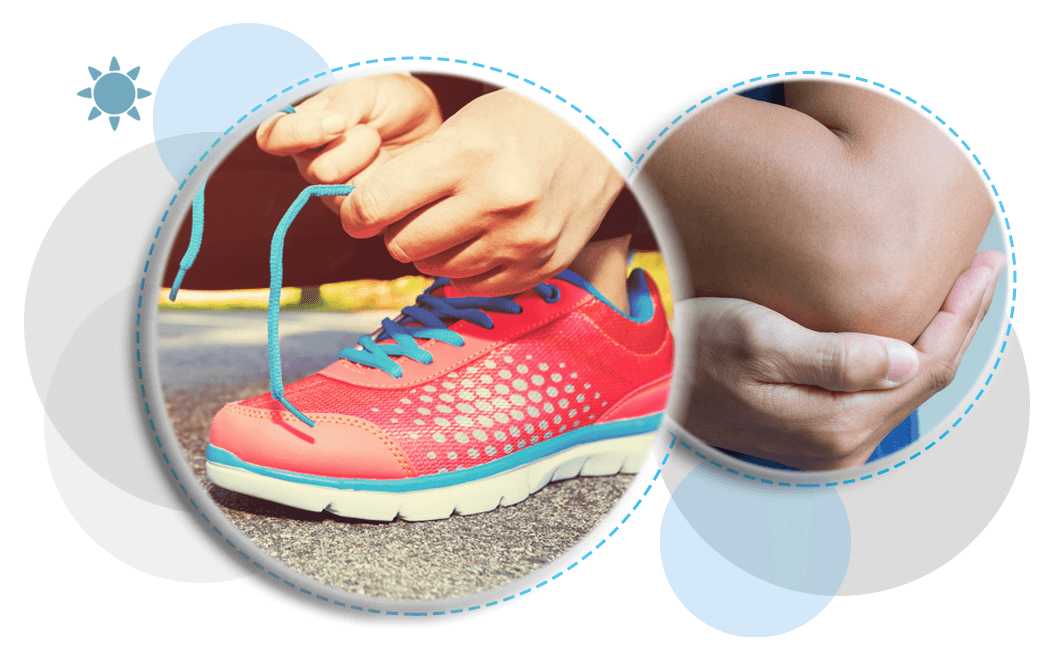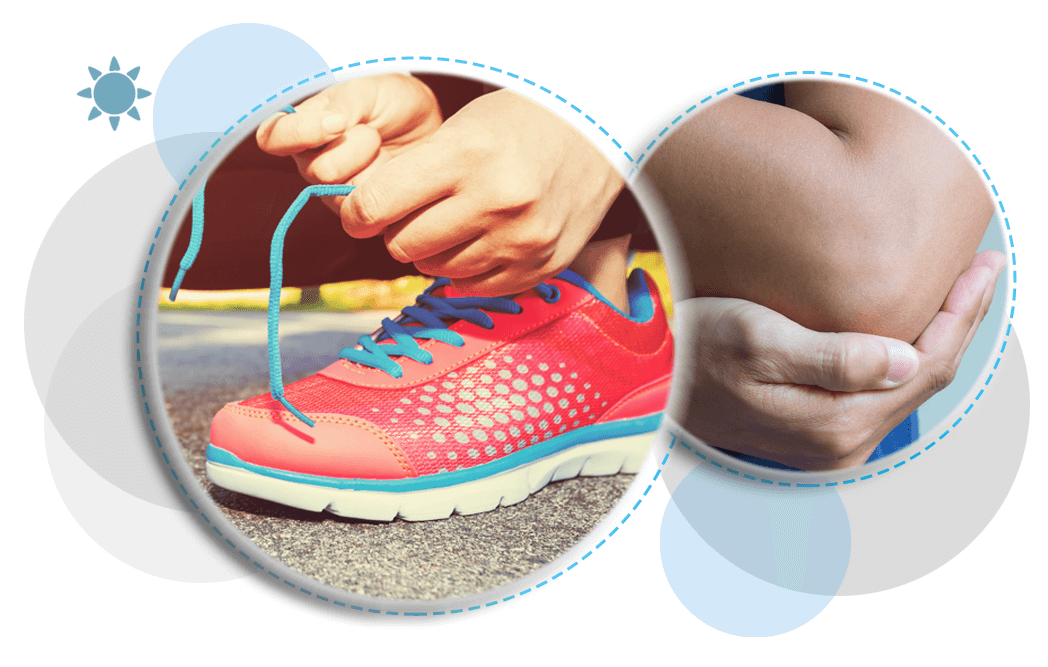Physical Activity and Safety Concerns
Physical activity is part of a healthy, balanced lifestyle as it helps individuals to maintain a healthy weight, is beneficial for bone and muscle health, helps with psychological well-being and reduces the risk of certain diseases including cancers, heart disease and diabetes. But it is important to be aware of safety concerns that can be associated with engaging in physical activities.

Cardiovascular Risk
It is known that physical activity generally decreases the risk of certain diseases, including heart disease in individuals, but cardiovascular problems such as a heart attack or arrhythmia are some of the risks that may arise when taking part in physical activity. While some may feel that the majority of heart attacks happen to individuals during exercise, approximately 90% of all heart attacks actually occur at rest and not while exercising.1
For an individual without existing heart disease the risk of a serious heart complication during exercise is 1 in 400,000 – 800,000 hours of exercise, whereas an individual who already has existing heart disease has an average risk of 1 in every 62,000 hours of exercise.1 In comparison, a person training for 1.5 h on 5 days per week accumulates a total of 11,700 h of exercise over 30 years. This essentially shows that even individuals who exercise regularly and extensively have a very low risk of serious cardiac events. It has also been noted that the risk of a heart attack in a sedentary person doing exercise is 50% greater than that of a person who exercises five times a week, which yet again translates into a very low risk.
Although the risk of a heart complication is small it is always wise to know the warning signs of a heart attack which include a feeling of discomfort in the chest (which may include pain that radiates to the arms, back or shoulder areas (“pins and needles”)), heart rhythm abnormalities like palpitations, skipping or thudding patterns, an unusual breathlessness or shortness of breath, dizziness or light-headedness.
Joint and mobility risk
Joints of the body, including the knees and ankles, have to bear a lot of stress from movement, especially in overweight or obese individuals. The body weight of an individual, along with the activity that they participate in, and the mechanical movement determines the load of force on a joint.2 For example, running has a greater impact on the joints than biking, and this effect is compounded by higher body weight.
Muscle weakness is also a factor which can cause joint problems and it has been shown that even small reductions in body weight can significantly reduce the stress on an overweight individual’s joints.2,3 However, research shows that those healthy individuals who participate in moderate, lower impact activities (such as walking, swimming, rowing) without previous joint problems do not have an increased risk of osteoarthritis - a degenerative joint disease - in the knee, however elite athletes who perform in vigorous activities such as running, squash and tennis, may be at higher risk of developing osteoarthritis in the knee due to the higher impact of these activities.4
How to play it safe
Physical activity is essential for a healthy body and mind and although there are valid safety concerns, generally more good than harm comes from engaging in physical activity. Choosing an appropriate environment for one’s preferred activity contributes to a high safety level and may be guided by the following list5:
- Physical separation from motor vehicles, such as pavements, walking paths, or bike lanes;
- Neighbourhoods with traffic-calming measures that slow down traffic;
- Places to be active that are well-lighted, where other people are present, and that are well-maintained (no litter, broken windows);
- Shock-absorbing surfaces on playgrounds;
- Well-maintained playing fields and courts without holes or obstacles;
- Padded and anchored goals and goal posts at soccer and football fields.
Additionally, it is recommended to wear appropriate protective gear and get professional advice before embarking on an exercise programme so that the schedule is tailored to the individual’s needs and abilities.
Further information:
EU Physical Activity Guidelines 2008
http://ec.europa.eu/sport/what-we-do/doc/health/pa_guidelines_4th_consolidated_draft_en.pdf
References:
1. Myers J (2003) Exercise and cardiovascular health. Circulation 107:e2-e5
2. Hunter DJ, Eckstein F (2009) Exercise and osteoarthritis. Journal of Anatomy 214:197-207
3. Messier SP, Gutekunst DJ, Davis C et al (2005) Weight loss reduces knee-joint loads in overweight and obese older adults with knee osteoarthritis. Arthritis and Rheumatism 52:2026–2032
4. Cooper C, Snow S, McAlindon TE et al (2000) Risk factors for the incidence and progression of radiographic knee osteoarthritis. Arthritis and Rheumatism 43:995–1000
5. U.S Department of Health and Human Services (2008) 2008 Physical Activity Guidelines for Americans. Available at: http://www.health.gov/PAGuidelines/pdf/paguide.pdf



